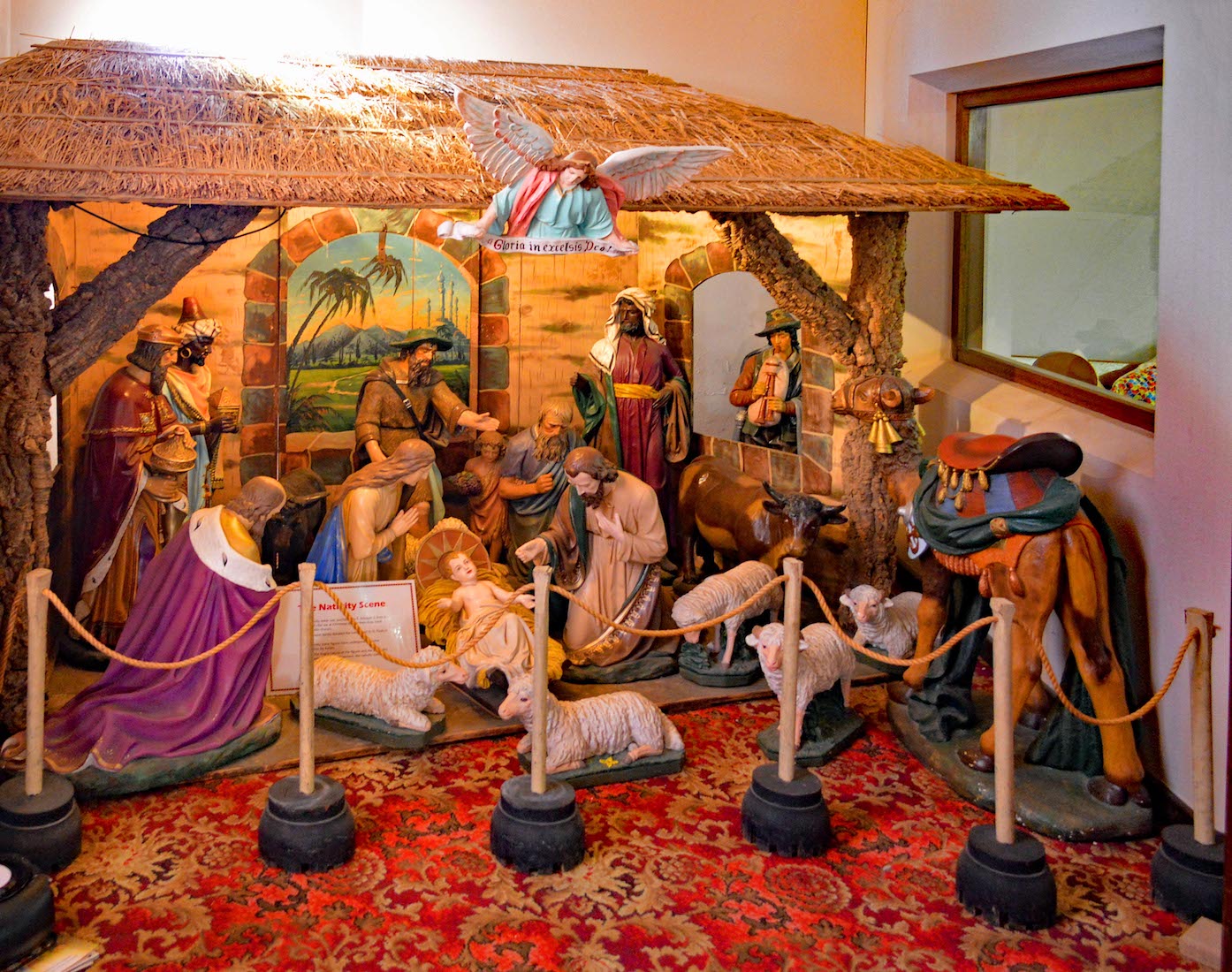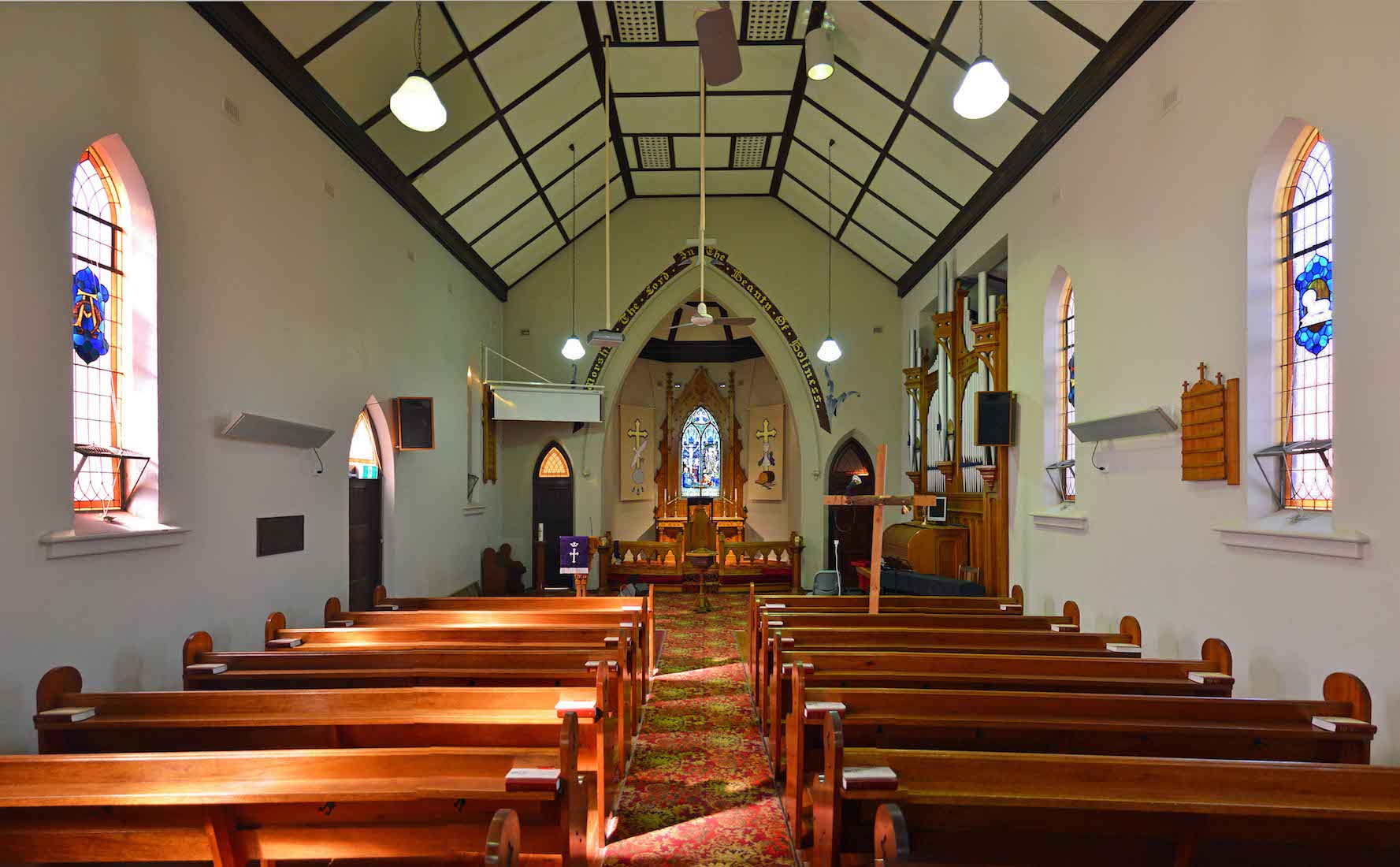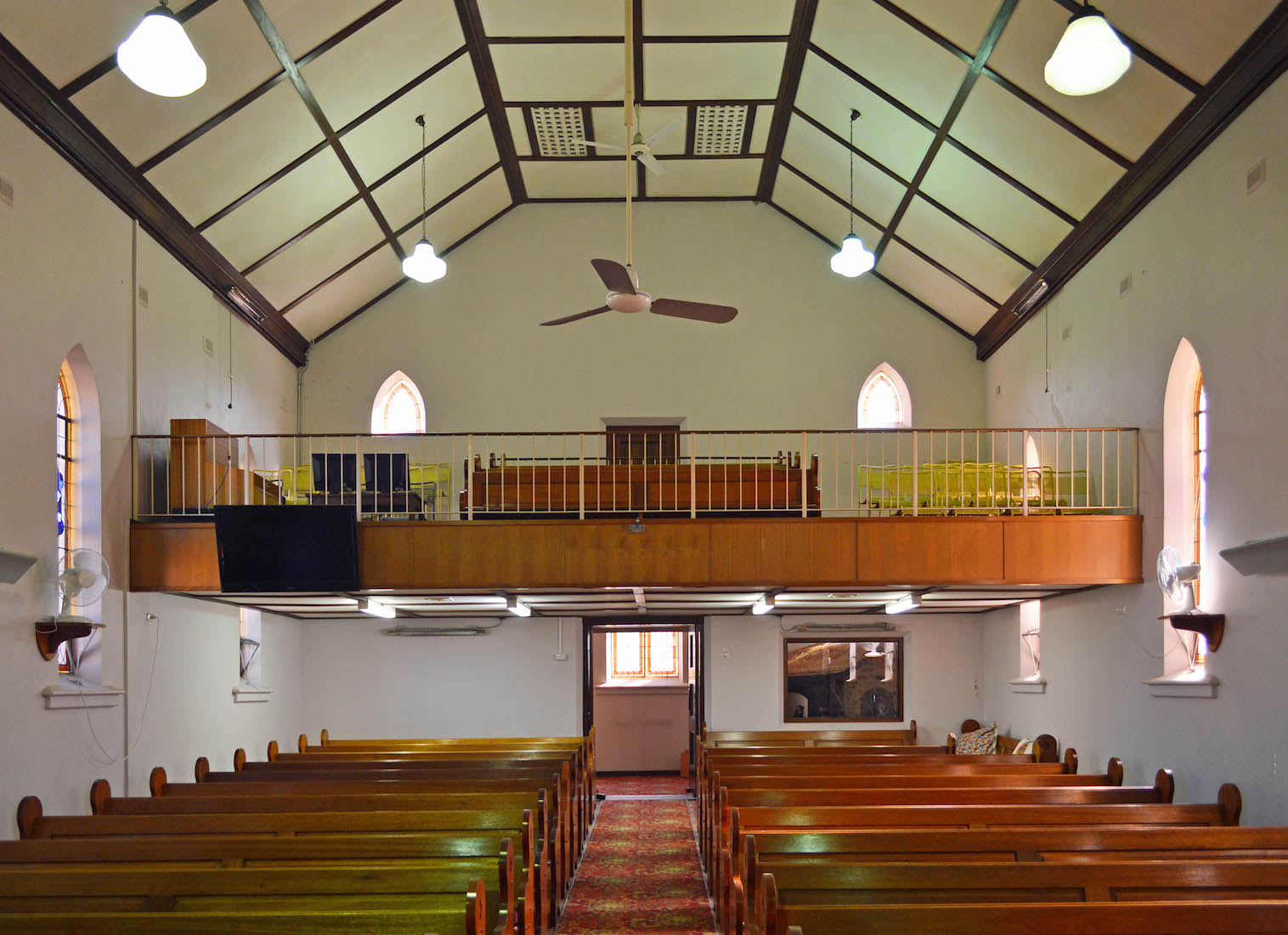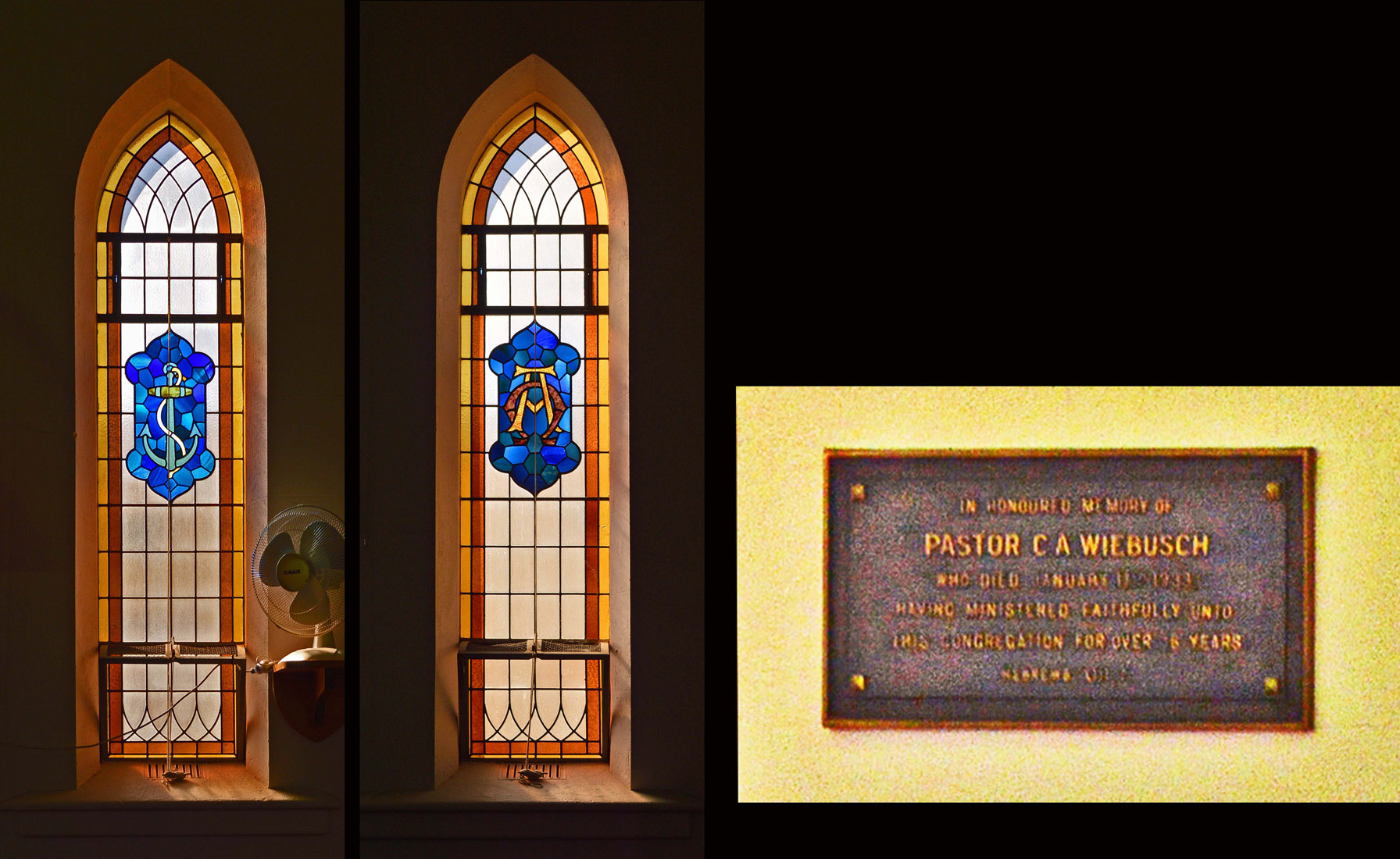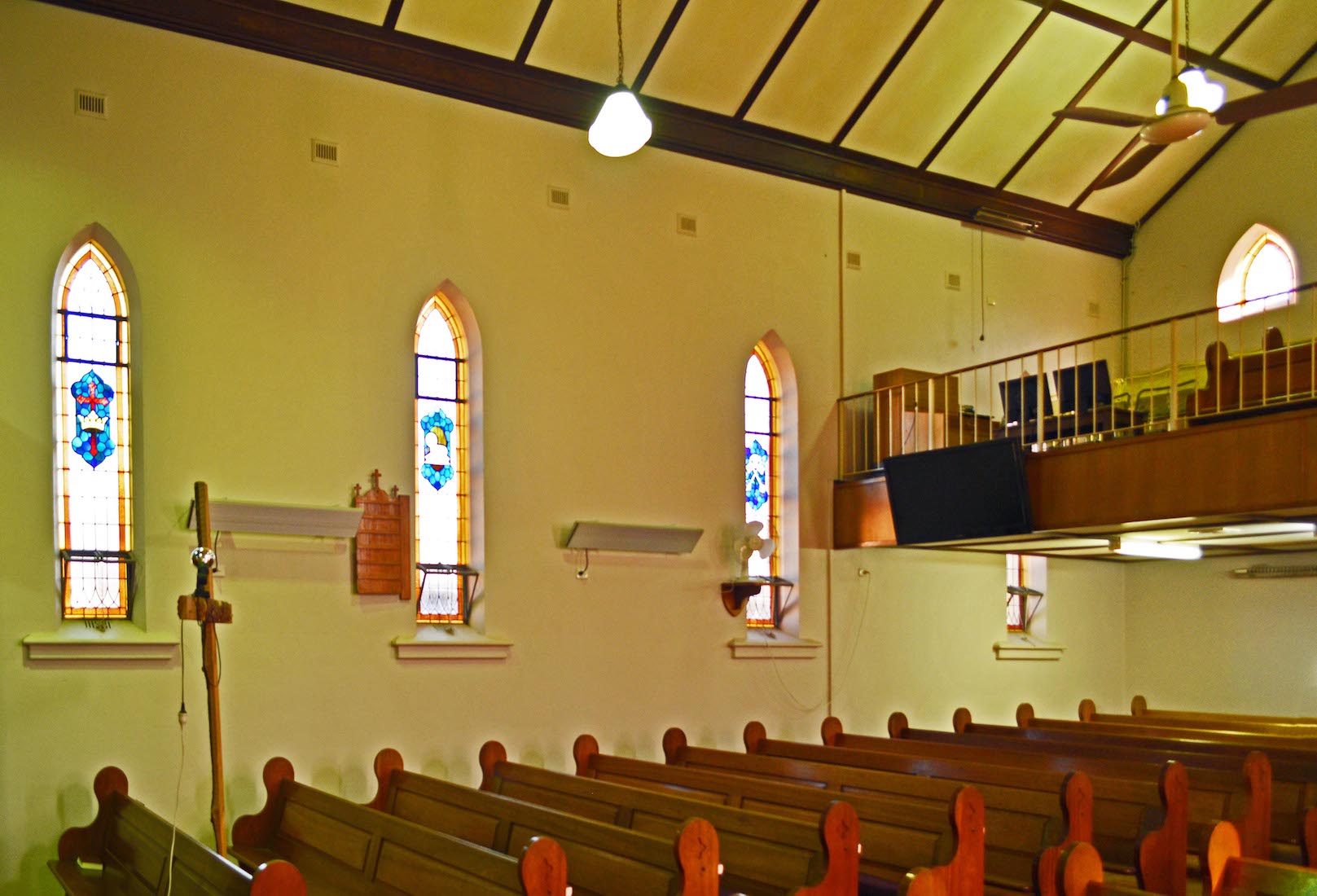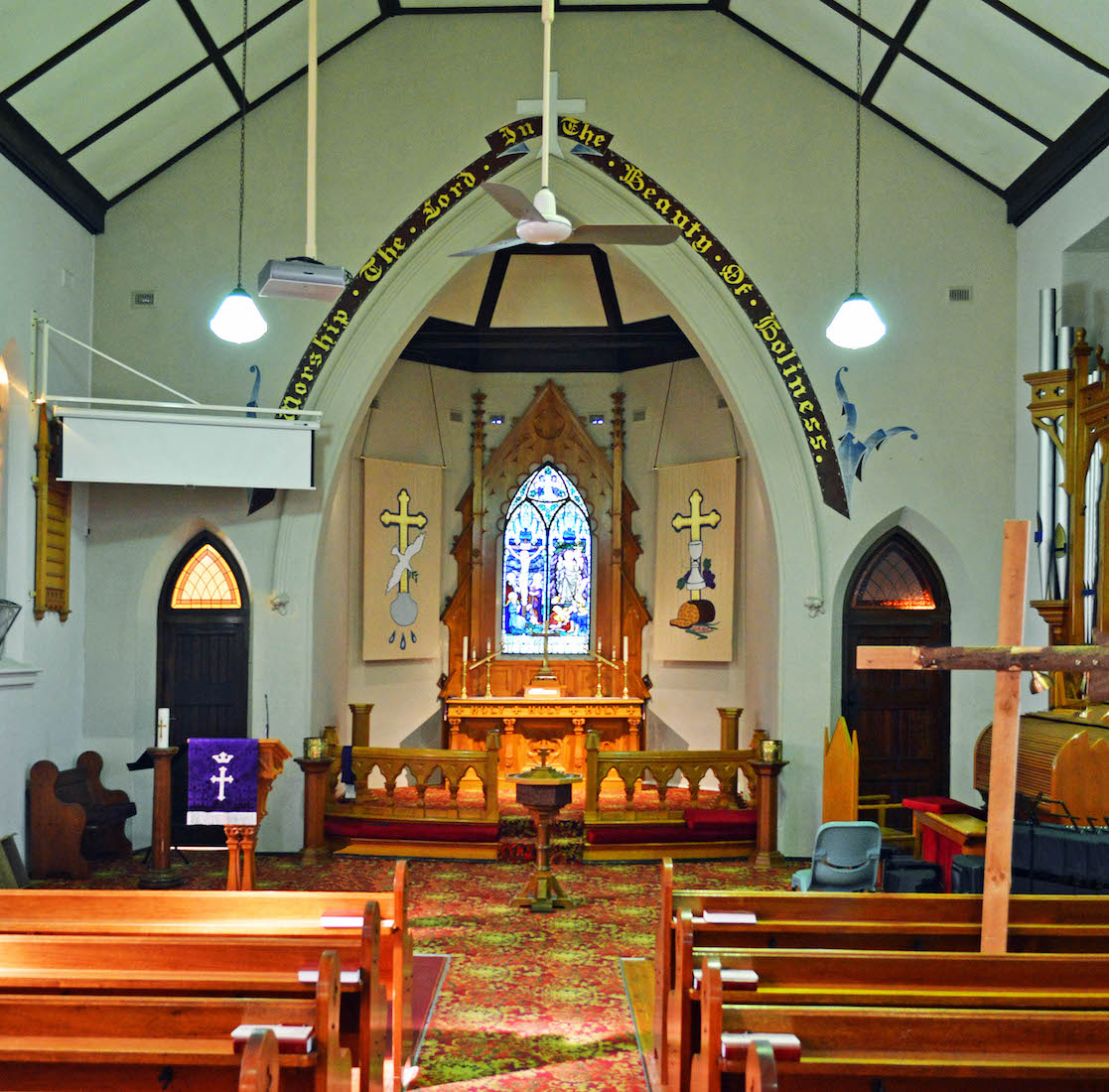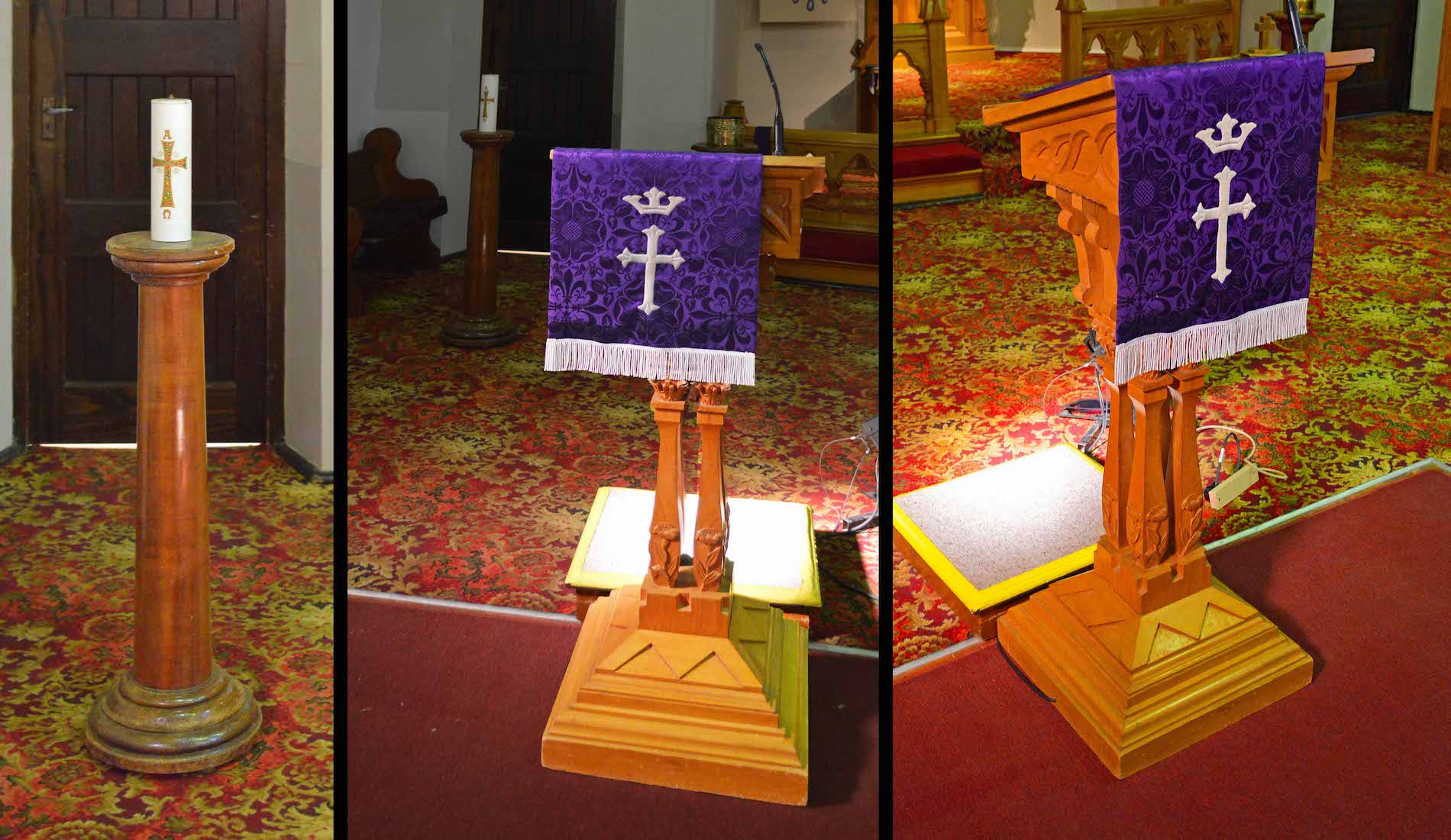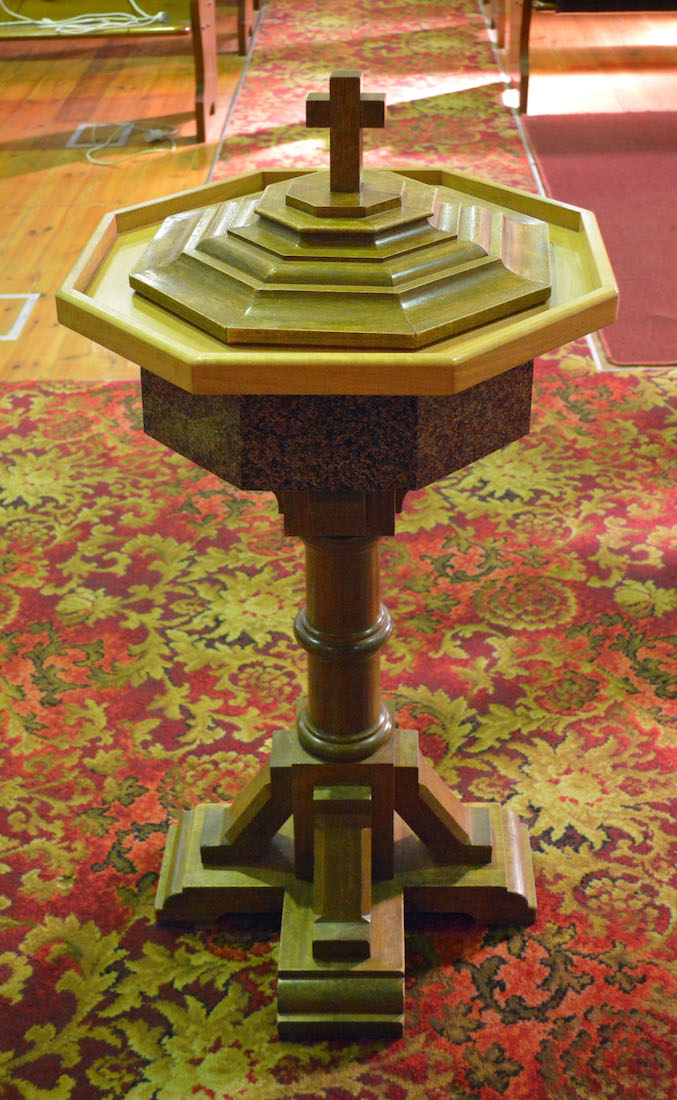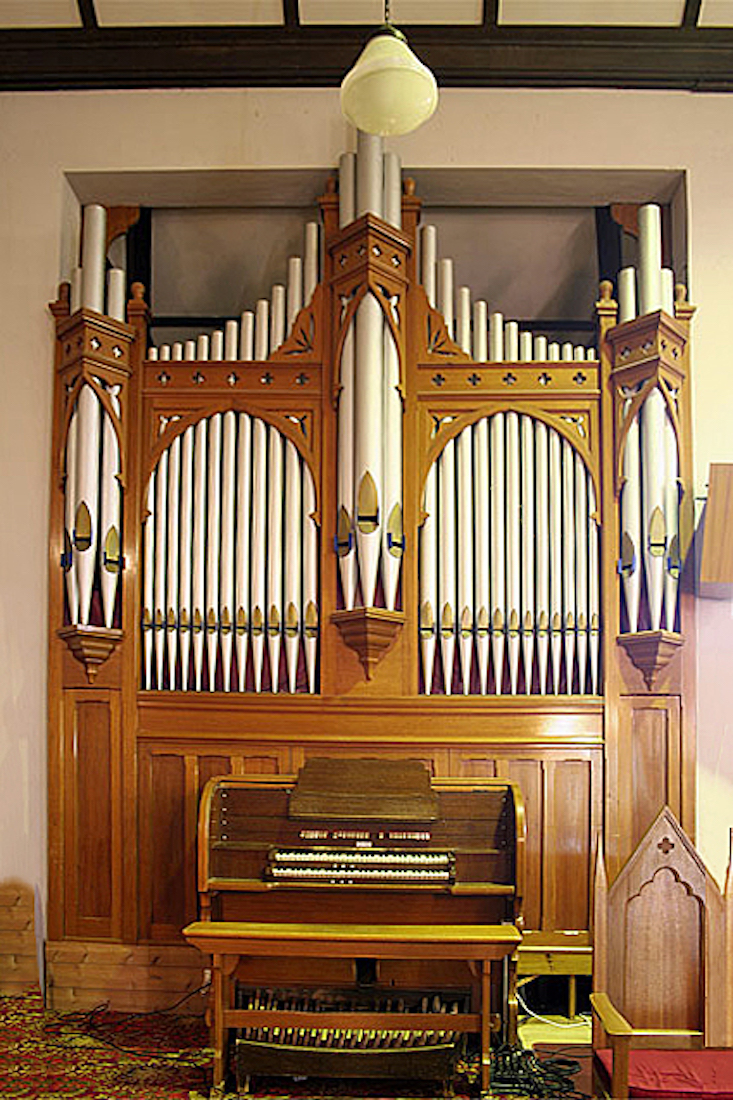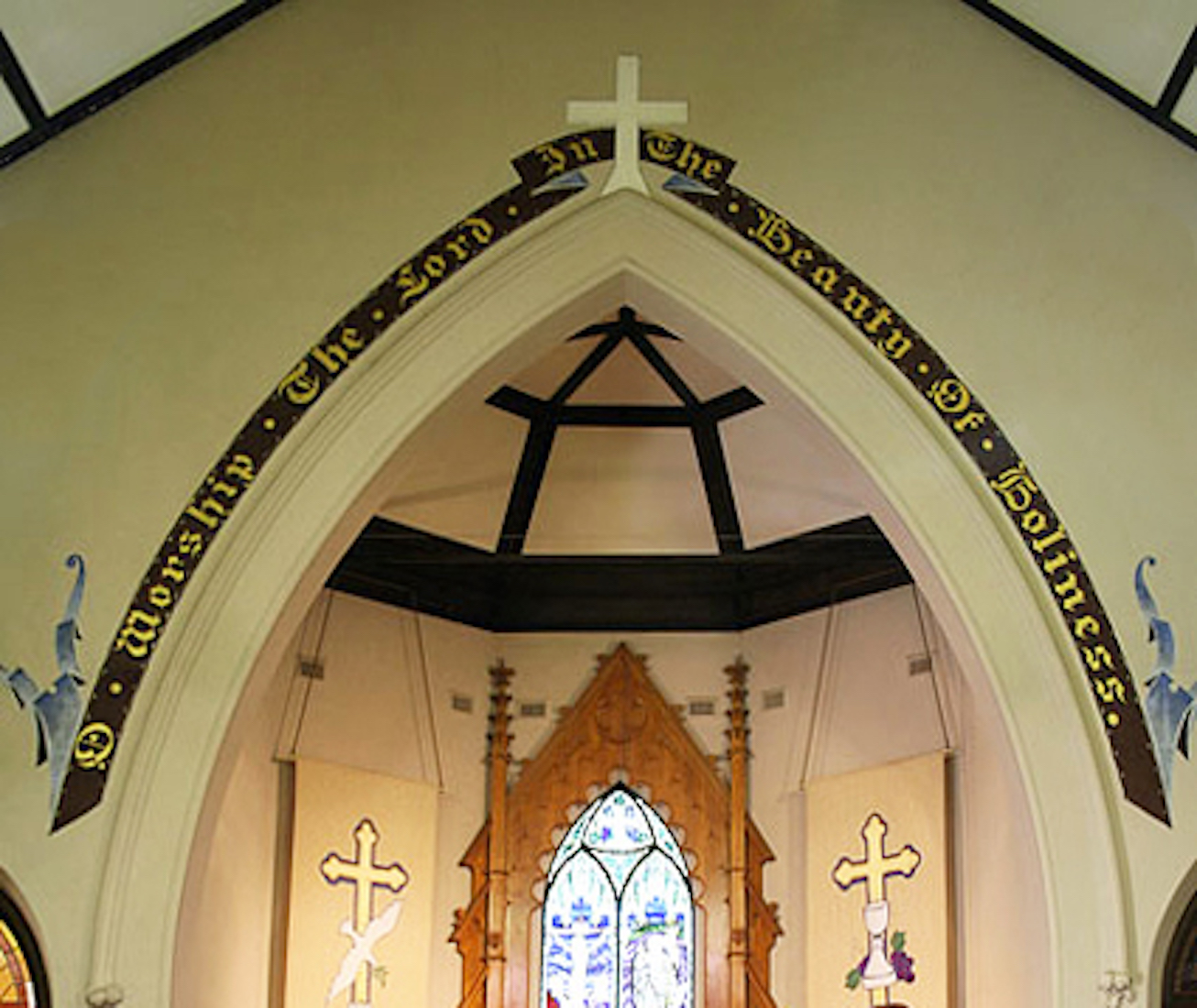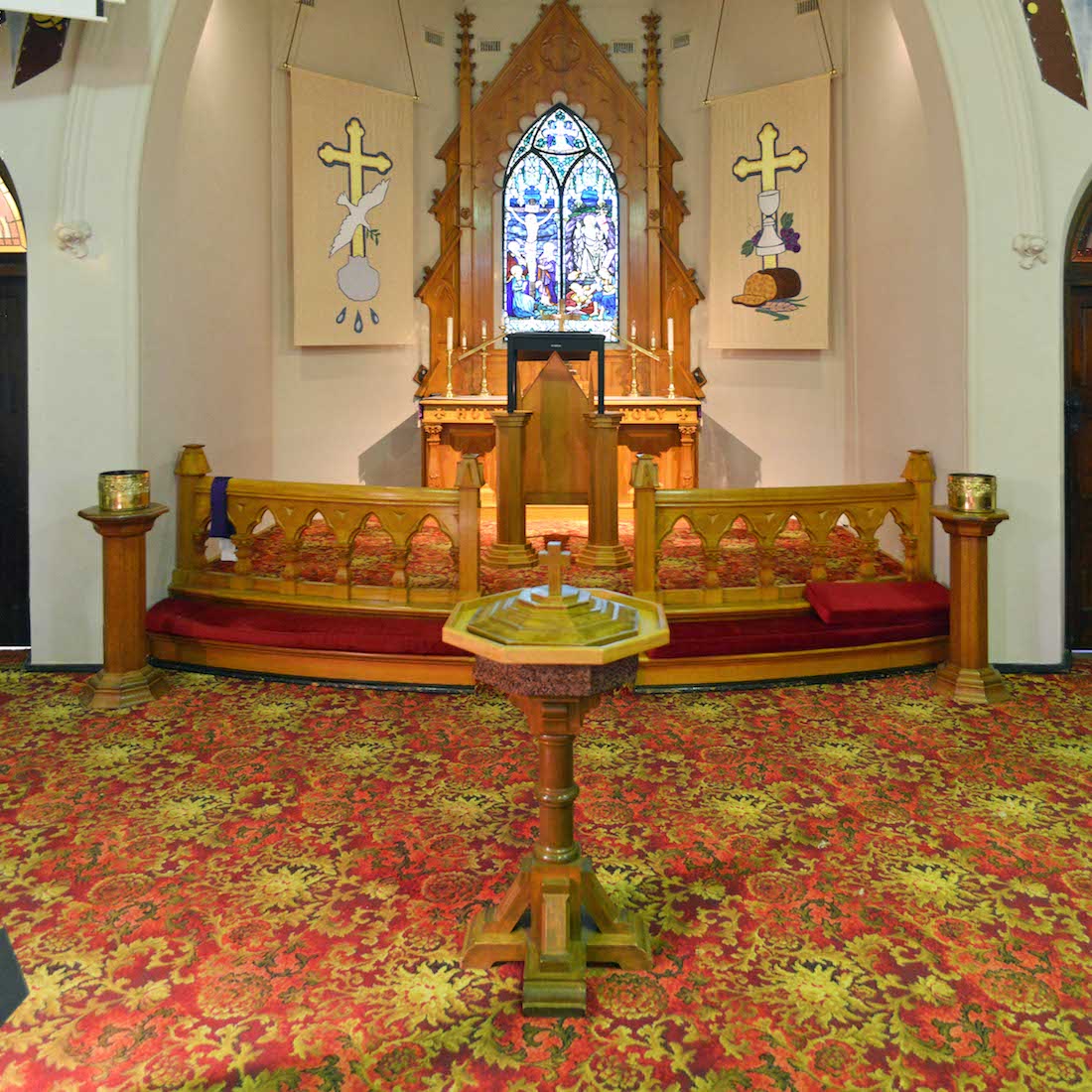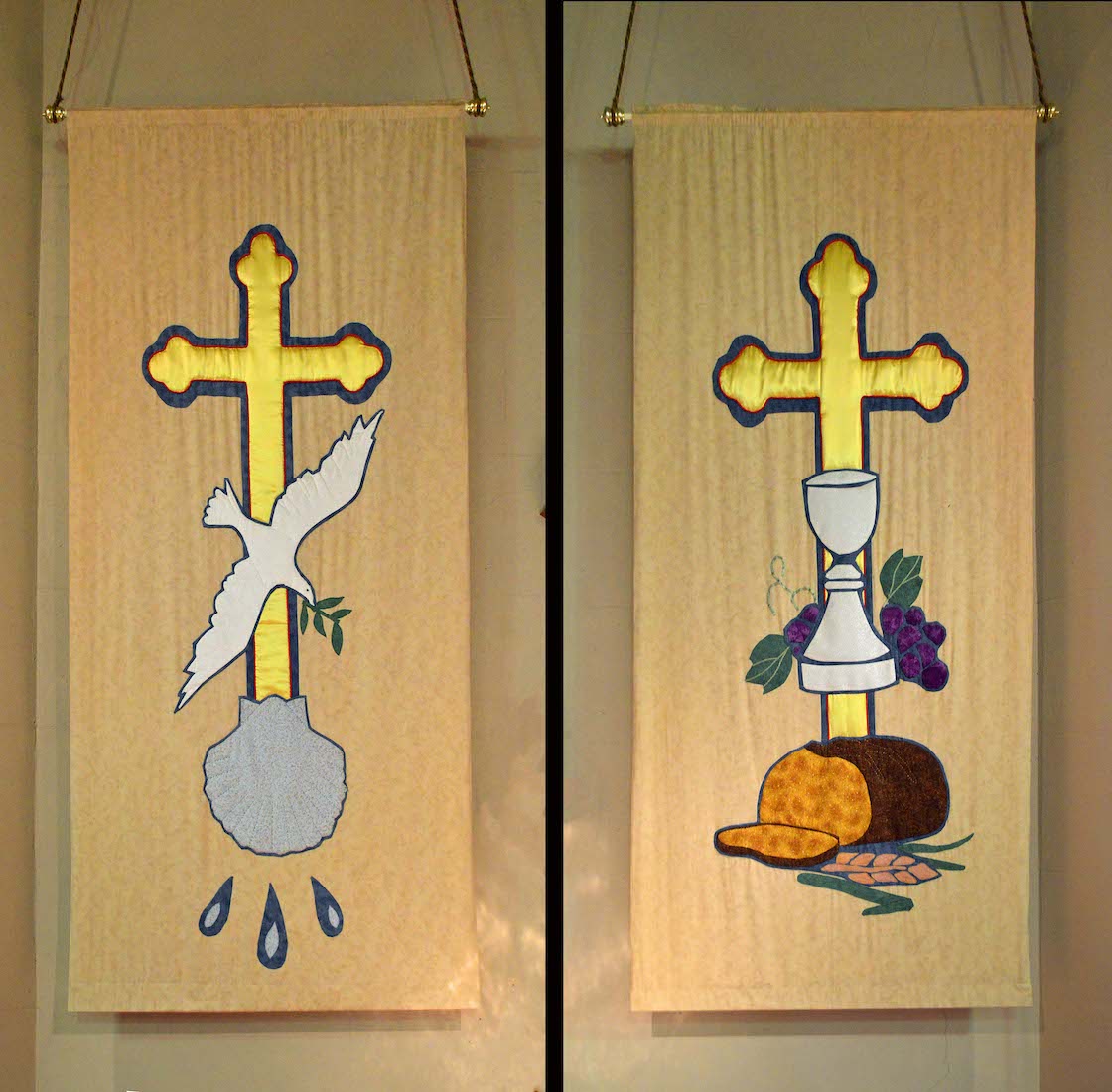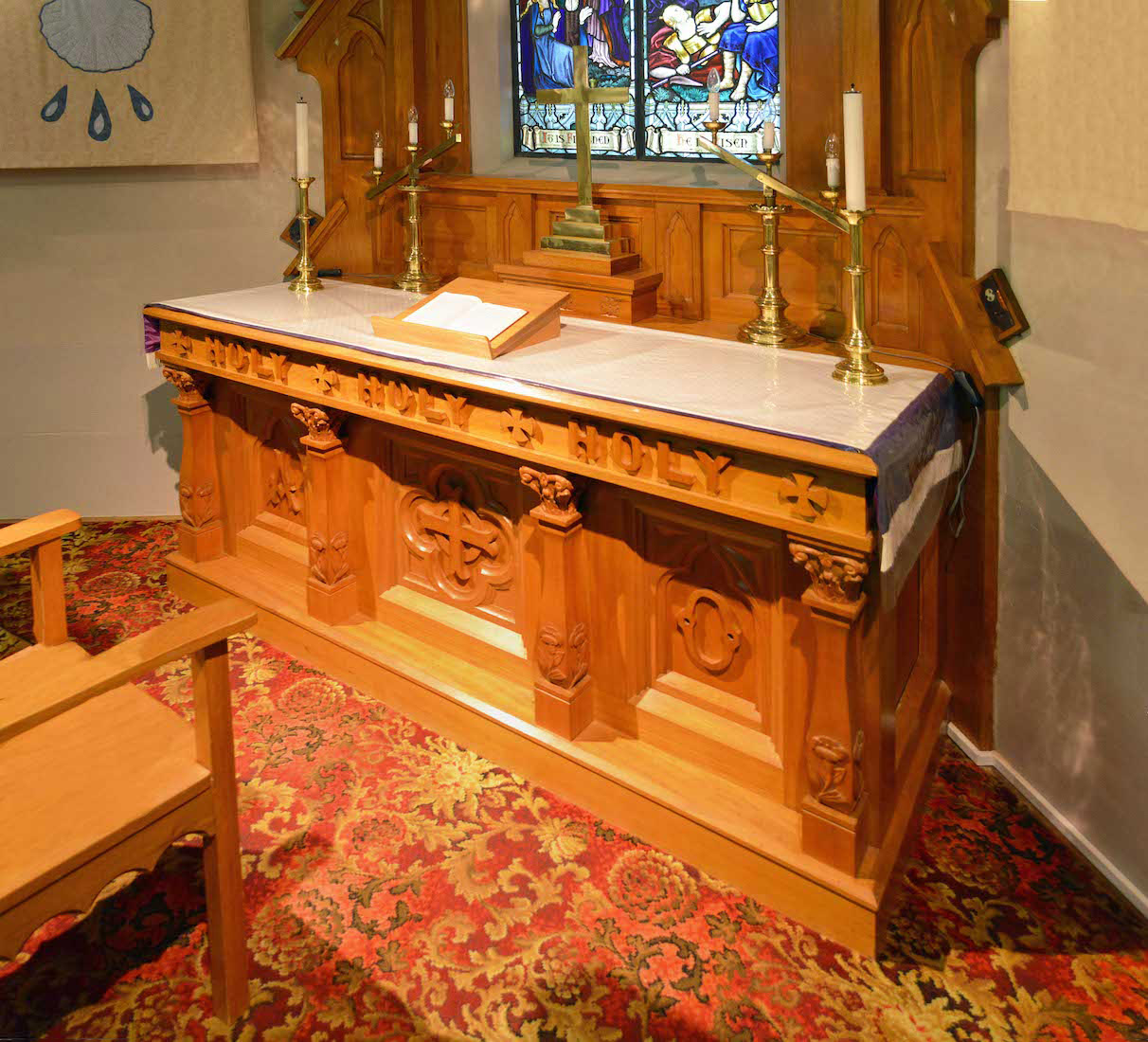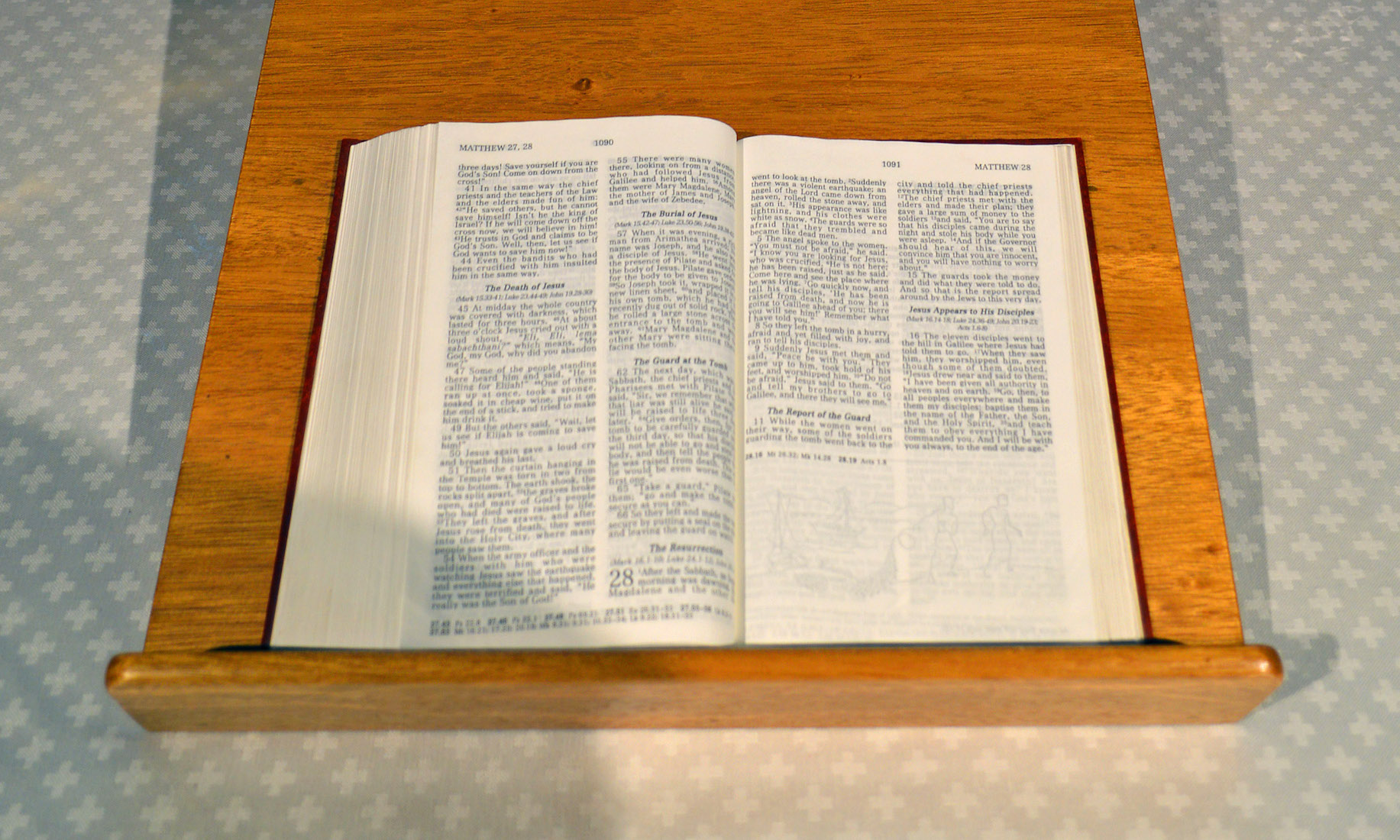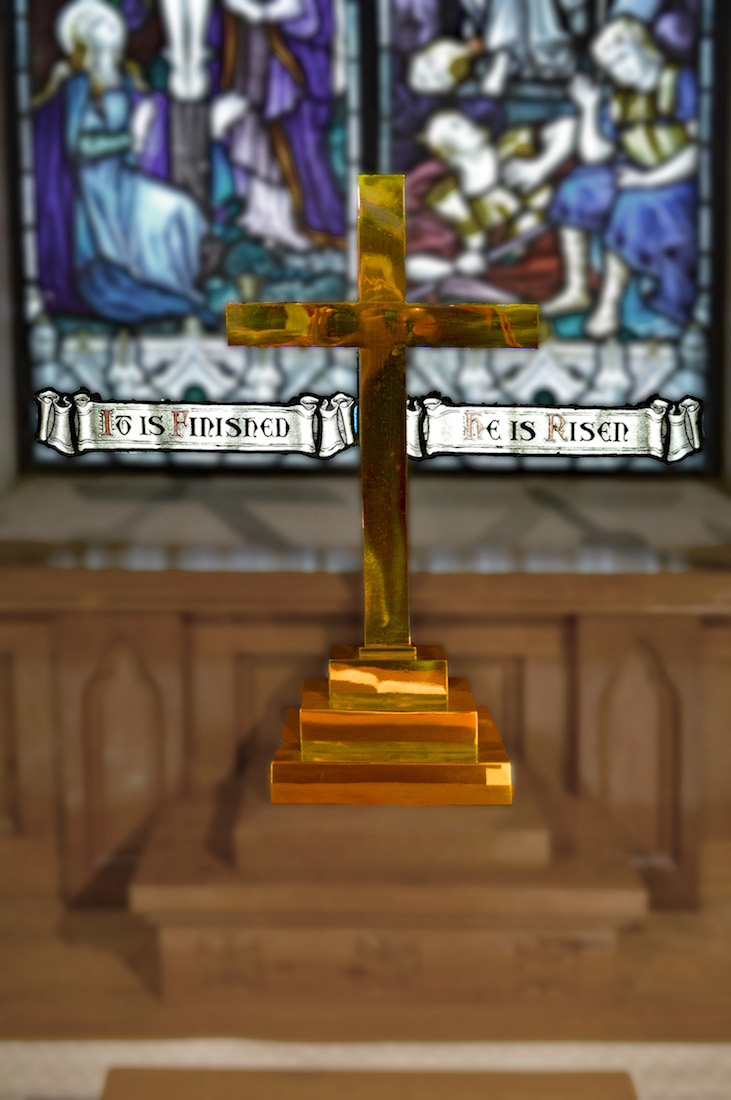22. THE CRIB
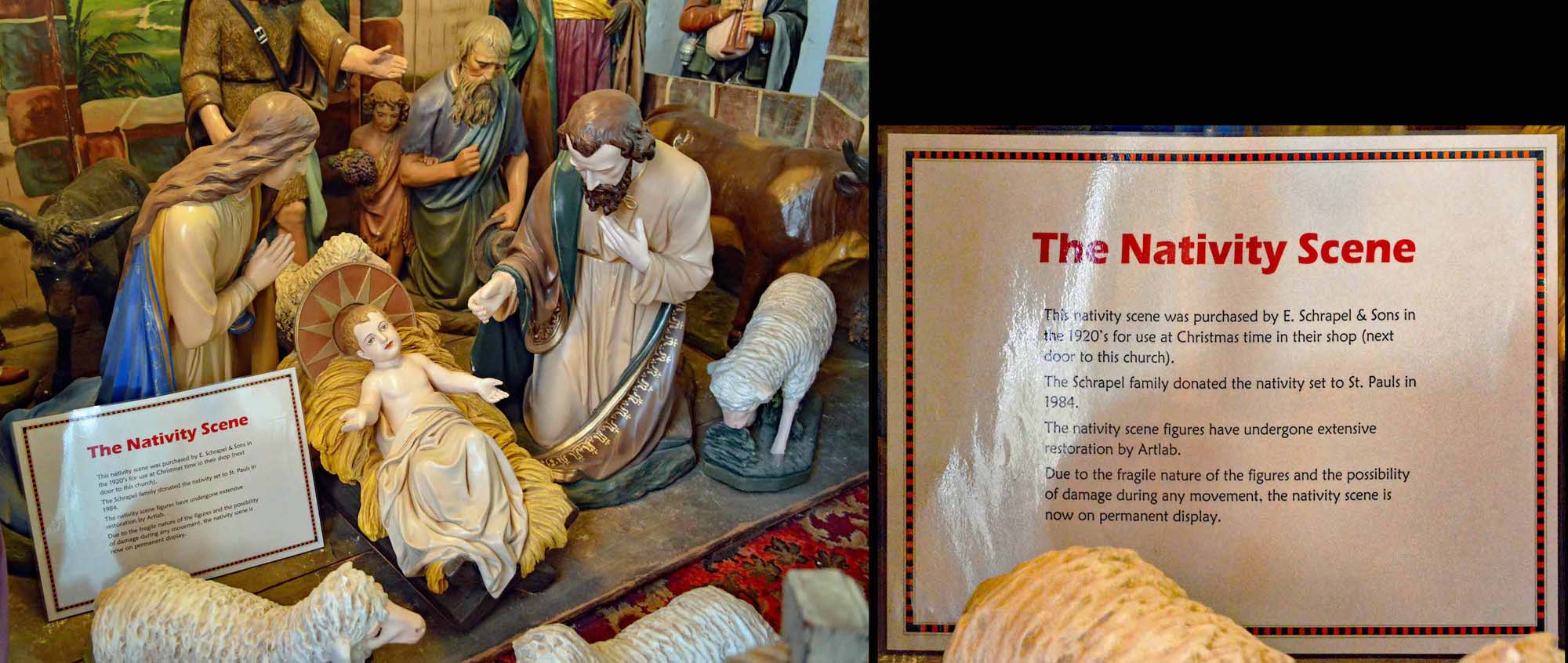
The little placard reads: ‘The Nativity Scene : This nativity scene was purchased by E. Schrapel & Sons in the 1920s for use at Christmas time in their shop (next door to this church). The nativity scene figures have undergone extensive restoration by Artlab. Due to the fragile nature of the figures, and the possibility of damage during any movement, the nativity scene is now on permanent display.’
23. NATIVITY SCENE DETAILS
Shown here are some details of the Nativity scene: some of the characters, including a minstrel in the right corner, the painted backdrop, and the angel overhead with scroll reading ‘Gloria in excelsis Deo!’
24. THE NAVE
We walk past the Nativity scene and enter the nave. This is a warm welcoming space. We notice the side windows, but our eyes are drawn forwards to the lectern, font and organ, the striking sanctuary arch, and then the sanctuary beyond.
25. BALCONY
We have already climbed to the balcony, but looking up from the nave aisle gives a different perspective. At the back are two small West facing windows, and the entry from the stairs. The balcony provides extra seating capacity. The television screen provides words for singers and leaders of worship. And below the balcony on the right side is the window overlooking the Nativity scene.
26. NORTH NAVE WALL
We see here the North nave wall West of the exit door. There are two windows of interest and a metal plaque.
27. WINDOWS AND PLAQUE
Th window at left shows a fine anchor with an allusion to Hebrews 6:19: ‘We have this hope as an anchor for the soul.’ The second window shows the familiar Alpha – Omega symbol, reminding us of several verses in the Book of Revelation about Christ being the First and the Last, the Beginning and the End. The plaque is in memory of Pastor C. A. Wiebusch who died in 1933. He was the first pastor of St Paul’s, and ministered here from 1916 to 1933.
28. SOUTH NAVE WALL
This shows the South nave wall to the West of the organ. There are three windows of interest here. There is also a curiously placed board for hymn numbers!
29. SOUTH NAVE WINDOWS
Shown here are three more of the beautifully crafted windows of the nave. From left the motifs are: • Cross and crown – relating to the crucifixion and glorification of Christ; • the Lamb, or Lamb of God (agnus Dei) (John 1:29) depicting Christ as God’s sacrifice; •crossed keys – reminding us of the Keys of the Kingdom given to Peter; the lily is occasionally used in reference to the Crucifixion.
30. FRONT NAVE
Before we look closely at the sanctuary, there are four items to investigate. At left is the Paschal candle and the lectern, at centre the baptismal font, and at right the pipe organ. The rough cross is not a permament fixture!
31. PASCHAL CANDLE AND LECTERN
The Paschal candle is sometimes called the Easter candle. and is a visual reminder that Jesus is the Light of the World (John 8:12). It is from the lectern that the Scripture is read Sunday by Sunday. It appears that here in St Paul’s, in the absence of a pulpit, the lectern is also used for the proclamation of the Gospel. This follows the Catholic practice of having an ‘ambo’, used for both purposes. The candle bears the Alpha and Omega, the lectern banner the Cross and crown – symbols we have already seen in the windows.
32. FONT
The baptismal font in this Church is quite distinctive, but the purpose is the same in its use for initiating babies and young children into the Christian life and membership of the Church.
33. PIPE ORGAN
The pipe organ dates from 1928. It is the largest of the organs in the Barossa Valley built by J.E. Dodd. It has tracker and pneumatic action. The manual tracker action was one of the last built in Australia until the 1960s: Dodd strongly advocated this in rural churches owing to its reliability. The organ’s compass was enlarged and three stops were added in 1972. It now has 19 stops and 1092 pipes. Of interest is the so-called Unda Miris stop showing the romantic character of Dodd’s tonal structure. The casework is also typical of Dodd’s work with its three towers each containing three pipes. [Photo Credit: Trevor Bunning, OHTA]
34. SANCTUARY ARCH
The sanctuary arch bears the text ‘O Worship the Lord in the Beauty of Holiness’ (Psalm 96:9) – literally a sign of the times, but interesting that it was written in Englash rather than German.
35. SANCTUARY
We finally come to the sanctuary itself, with the banners, the altar, the (hidden!) Bible, the cross, and the colourful East window.
36. THE BANNERS
The East window and altar are framed by two matching and gently coloured banners, each with a large golden Cross. The banner at left also shows a dove with a frond in its mouth – an allusion to the Holy Spirit, but also to the story of Noah with the promise of safety. The scallop shell is a commonly used symbol of Christian baptism. The banner at right shows the bread and chalice of wine – symbols of the Eucharist.
37. THE ALTAR
The attractively carved altar has the words ‘ + Holy + Holy + Holy + ’ carved across the top, and the letters Alpha and Omega at the bottom on either side of the central cross. The flowers at the base of each column are perhaps roses, with reference to the Lutheran rose?
38. OPEN BIBLE
On the altar of each Valley Lutheran church there is an open Bible, indicating the high value Lutherans place on the Holy Scripture.
39. CROSS
I am surprised to find a Cross rather than a Crucifix standing on the St Paul’s altar. Almost all of the Lutheran churches I have visited have had a Crucifix on the altar. Of course the Crucifixion is well represented here in the window behind.
40. THE EAST WINDOW
The East window dates from the inception of the Church in 1928. The window is in two parts: the Crucifixion at left, and the Resurrection at right. In this setting, the ‘empty Cross’ on the altar is just right as a link between the two scenes. This completes our tour of St Paul’s Church.
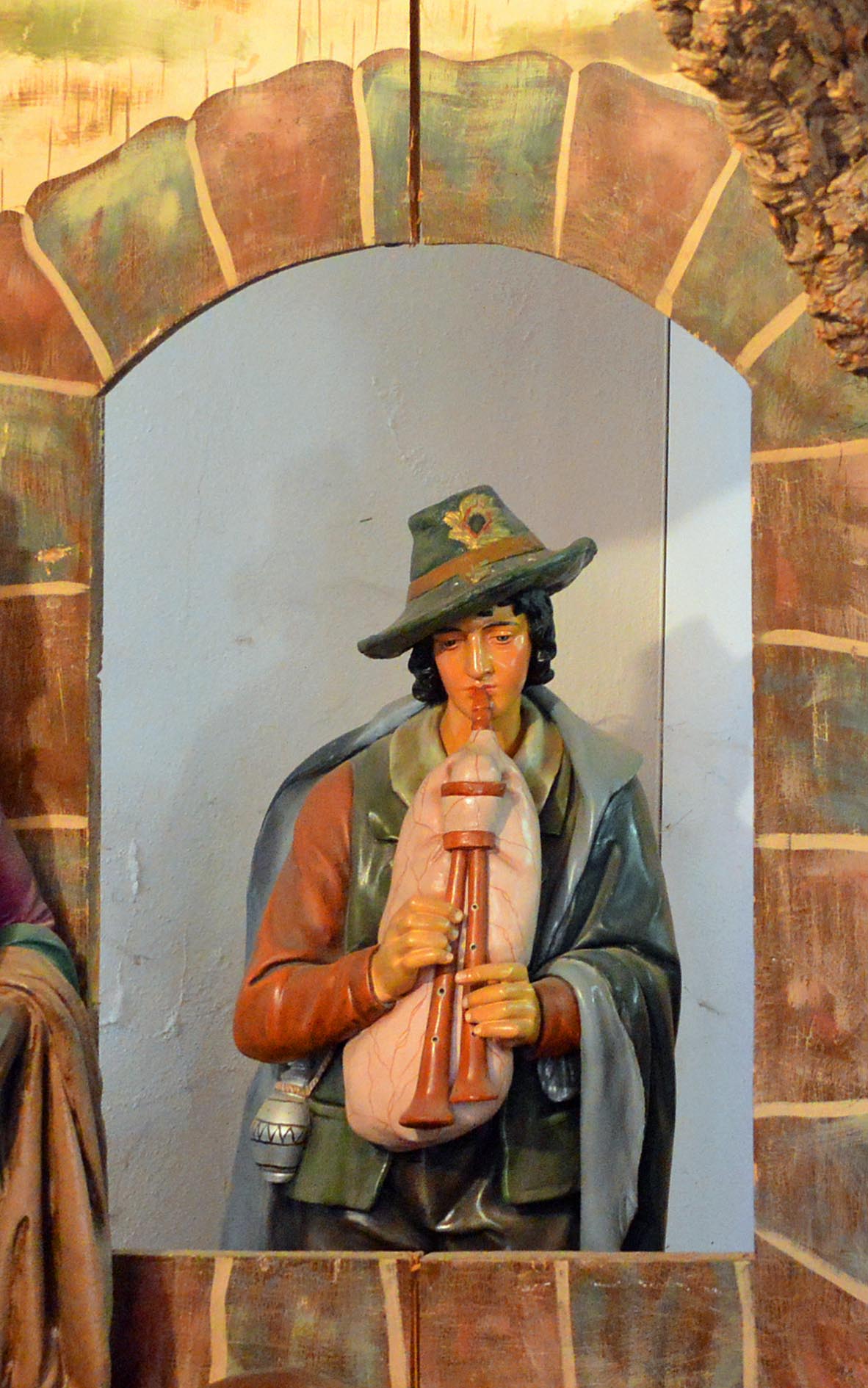
CONCLUSION
I hope you have enjoyed visiting St Paul’s Lutheran Church with me. I am grateful to Pastor Guntars Baikovs, and especially Roger Both who gave up his valuable time to show us around both St Paul’s and St John’s.
I am very happy to receive any corrections or constructive comments about this site: the best websites are those which have no errors! I am grateful to my wife Margie who came with me and who has done much valuable proof reading.
St Paul’s has a minimal website with link
http://stpauls-tanunda.lutheran.org.au/
However, this site has a further link to a site for the new combined Grace Lutheran Church.
With one acknowledged exception, the photos on this site are all mine, and can also be found in higher resolution at:
https://www.flickr.com/photos/paulscottinfo/albums/
The exception is the organ photo taken by Trevor Bunning, and reproduced with permission from the Organ Historical Trust of Australia. Their site relating to the St Paul’s organ has link:
https://www.ohta.org.au/organs/organs/TanundaPLthCh.html
Site created: 10 / 2020
Paul Scott

